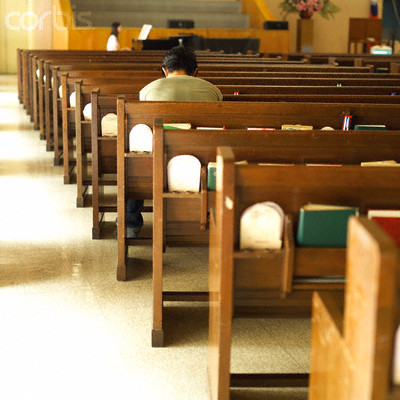We Have a Statistical Problem
 It's a problem that is on my mind when I go to sleep, and I'm thinking about it again when I wake up. It is huge.
First, an illustration: Back in 1986, Mark Beeson came to town and started this church we call Granger. At that time—the church had all of 5 people (the number in the Beeson family). By our best guess and memory of demographic reports from 25 years ago—about half of the local population attended church somewhere. Mark and Sheila went after the other half—the people who were unchurched. And we built an entire ministry around that mission.
It's a problem that is on my mind when I go to sleep, and I'm thinking about it again when I wake up. It is huge.
First, an illustration: Back in 1986, Mark Beeson came to town and started this church we call Granger. At that time—the church had all of 5 people (the number in the Beeson family). By our best guess and memory of demographic reports from 25 years ago—about half of the local population attended church somewhere. Mark and Sheila went after the other half—the people who were unchurched. And we built an entire ministry around that mission.
And it worked. Better than we could have imagined. We couldn't baptize, disciple or minister to them fast enough.
Now, more than two decades later over 5,000 attend regularly, 8,000 attend at least once a month, and we have a well-established community impact ministry happening throughout the city. Conservatively, more than 10,000 people have given their life to Christ and untold thousands of next steps have been taken by Christ-followers at all stages of their spiritual journey.
And yet, today, as we look around our community, the stats haven't changed a whole lot. Even with all that impact, there is still about 50% of the population that doesn't attend church (maybe even a bit more now).
How is that possible? How is it, when we've gone from 0 to 8,000 – that we aren't even making a dent in the unchurched population?
I think it's because of three other conditions…
- The church in America, as a whole, is in decline. That means if you combine the stats and impact of all the churches in our region, we are cumulatively involving fewer people and having less of an impact with every year that passes. That is a statistical fact that describes our country—and a subjective, yet intuitive reality about our local region.
- The culture is becoming more varied by the day. With rare exception, churches tend to reach people like themselves. At Granger, we are reaching a subset of our local culture—and doing it VERY effectively—but that subset is a smaller percentage of the population with every year that passes.
- Culture is not only more varied—it is changing. More people are exploring spirituality now than ever before—but fewer are doing it through the context of a physical church.
Pick any well-known large impact church and ask the same question.
- Willow Creek – is the percentage of people in the region who are fully devoted followers of Christ higher than when the church started? The same? Or actually less?
- Saddleback – same question.
- New Spring Church – same question.
- North Point Church – same question.
- Name Your Favorite Large Church – same question.
I don't pretend to have studied the demographics in each of those areas, but in general, my sense is there is something about the "come to us" model that isn't working to expand the gospel. Yes, it's working for who it's working for. But it's not working to curb the decline of the American church overall. And that, my friends, is a statistical problem.
Some popular authors and speakers are saying it's time to give up on church as we've known it. Leave the "attractional model" behind and become "missional" instead.
I don't think it's an either/or. I think there is an AND in the conversation that we are missing. Like I said, it's been on my mind 24/7 in recent months. And, it is having a gargantuan impact on our thinking at Granger about the future.
It's something I'll be writing more about in the coming days, but for now, what are your thoughts?
